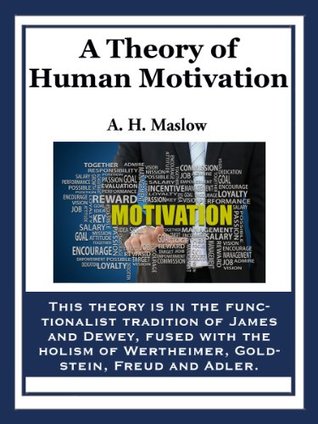More on this book
Community
Kindle Notes & Highlights
Young in a recent article (21) has summarized the work on appetite in its relation to body needs. If the body lacks some chemical, the individual will tend to develop a specific appetite or partial hunger for that food element.
That is to say, the person who thinks he is hungry may actually be seeking more for comfort, or dependence, than for vitamins or proteins.
preempted
Another indication of the child’s need for safety is his preference for some kind of undisrupted routine or rhythm. He seems to want a predictable, orderly world. For instance, injustice, unfairness, or inconsistency in the parents seems to make a child feel anxious and unsafe.
Other broader aspects of the attempt to seek safety and stability in the world are seen in the very common preference for familiar rather than unfamiliar things, or for the known rather than the unknown. The tendency to have some religion or world-philosophy that organizes the universe and the men in it into some sort of satisfactorily coherent, meaningful whole is also in part motivated by safety-seeking.
Compulsive-obsessives try frantically to order and stabilize the world so that no unmanageable, unexpected or unfamiliar dangers will ever appear (14); They hedge themselves about with all sorts of ceremonials, rules and formulas so that every possible contingency may be provided for and so that no new contingencies may appear.
thwarting
maladjustment
Also not to be overlooked is the fact that the love needs involve both giving and receiving love.4
Satisfaction of the self-esteem need leads to feelings of self-confidence, worth, strength, capability and adequacy of being useful and necessary in the world. But thwarting of these needs produces feelings of inferiority, of weakness and of helplessness.
Since, in our society, basically satisfied people are the exception, we do not know much about self-actualization, either experimentally or clinically. It remains a challenging problem for research.
Such a statement is a partial solution of the general problems of curiosity, the search for knowledge, truth and wisdom, and the ever-persistent urge to solve the cosmic mysteries.
Acquiring knowledge and systematizing the universe have been considered as, in part, techniques for the achievement of basic safety in the world, or, for the intelligent man, expressions of self-actualization.
prepotent
We have spoken so far as if this hierarchy were a fixed order but actually it is not nearly as rigid as we may have implied.
self-assertion
The so-called ‘psychopathic personality’ is another example of permanent loss of the love needs. These are people who, according to the best data available (9), have been starved for love in the earliest months of their lives and have simply lost forever the desire and the ability to give and to receive affection (as animals lose sucking or pecking reflexes that are not exercised soon enough after birth).
martyrs;
“If one need is satisfied, then another emerges.” This statement might give the false impression that a need must be satisfied 100 per cent before the next need emerges.
For instance, if I may assign arbitrary figures for the sake of illustration, it is as if the average citizen is satisfied perhaps 85 per cent in his physiological needs, 70 per cent in his safety needs, 50 per cent in his love needs, 40 per cent in his self-esteem needs, and 10 per cent in his self-actualization needs.
prepotent
overhaul
amelioration
Multiple determinants of behavior. — Not all behavior is determined by the basic needs.
We may also reject the old, naive, behaviorism which assumed that it was somehow necessary, or at least more ‘scientific’ to judge human beings by animal standards.
There are at least five sets of goals, which we may call basic needs. These are briefly physiological, safety, love, ‘esteem, and self-actualization.
thwarted
Throughout life it may be said that one of the main conative functions of education is this neutralizing of apparent dangers through knowledge, e. g., I am not afraid of thunder because I know something about it.
6Perhaps the desire for prestige and respect from others is subsidiary to the desire for self-esteem or confidence in oneself. Observation of children seems to indicate that this is so, but clinical data give no clear support for such a conclusion.


